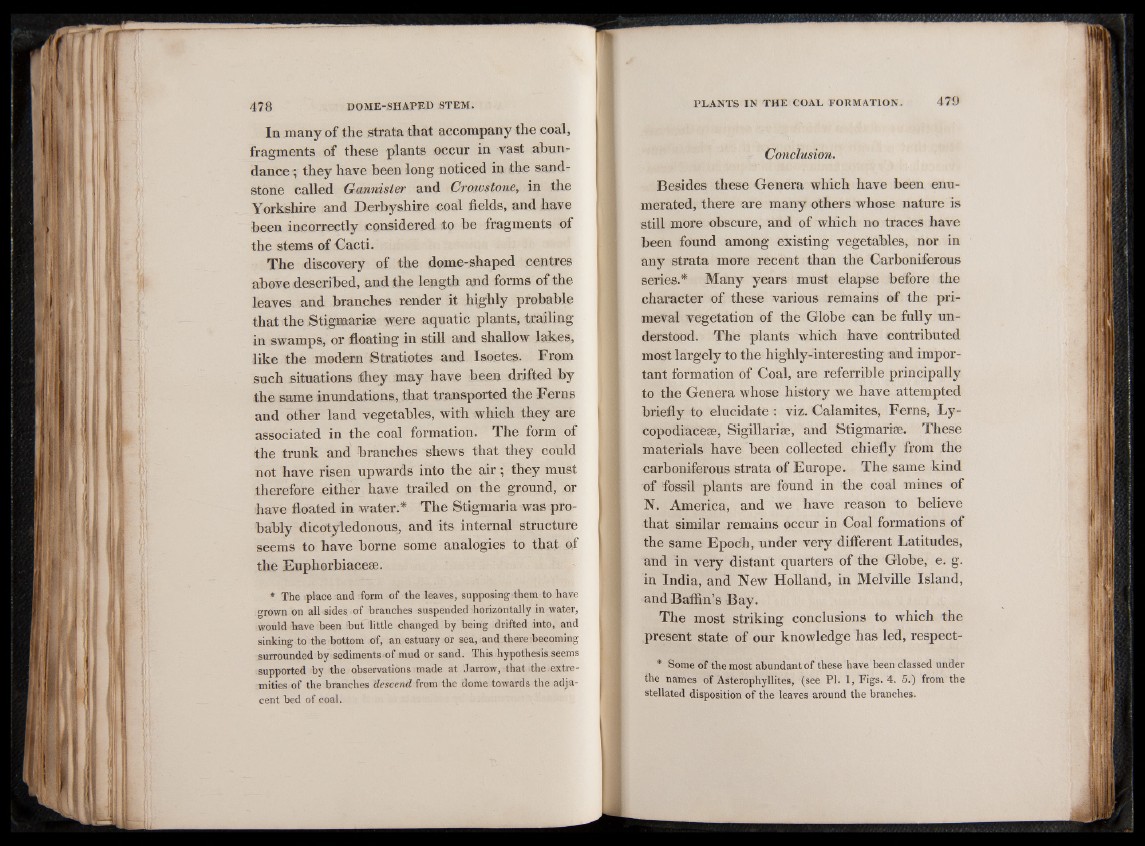
In many o f the strata that accompany the coal,
fragments o f these plants occur in vast abundance
•; they have been long noticed in the sandstone
called Ganndster and Crowstone, in the
Yorkshire and Derbyshire eoal fields, and have
been incorrectly considered to be fragments o f
the stems of Cacti.
T he discovery o f the dome-shaped centres
above described, and the length and forms o f the
leaves and branches render it highly probable
that the Stigmarke were aquatic plants., trailing
in swamps, or floating in still and shallow lakes,
like the modern Stratiotes and Isoetes. From
such situations they may have been drifted by
the same inundations, that transported the Ferns
and other land vegetables, with which they are
associated in the coal formation. The form of
th e trunk and branches shews that they could
not have risen upwards into the a ir ; they must
therefore either have trailed on the ground, or
have floated in water.* T he Stigmaria was probably
dicotyledonous, and its internal structure
seems to have borne some analogies to that of
the Euphorbiaceae.
* The place and form of the leaves, supposing them to have
grown on all sides of branches suspended horizontally in water,
would have been but little changed by being drifted into, and
sinking to the bottom of, an estuary or sea, and there becoming
surrounded by sediments of mud or sand. This hypothesis seems
supported by the observations made at Jarrow, that the extremities
of the branches descend from the dome towards the adja-
Conclusion.
Besides these Genera which have been enumerated,
there are many others whose nature is
still more obscure, and o f which no traces have
been found among existing vegetables, nor in
any strata more recent than the Carboniferous
series.* Many years must elapse before the
character o f these various remains o f the primeval
vegetation of the Globe can be fully understood.
The plants which have contributed
most largely to the highly-interesting and important
formation of Coal, are referrible principally
to the Genera whose history we have attempted
briefly to elucidate : viz. Calamites, Ferns, Ly-
copodiaceæ, Sigillariæ, and Stigmarke. These
materials have been collected chiefly from the
carboniferous strata o f Europe. The same kind
o f fossil plants are found in the coal mines of
N. America, and we have reason to believe
that similar remains occur in Coal formations o f
the same Epoch, under very different Latitudes,
and in very distant quarters o f the Globe, e. g.
in India, and New Holland, in Melville Island,
and Baffin’s B a y .
The most striking conclusions to which the
present state o f our knowledge has led, respect-
* Some of the most abundant of these have been classed under
the names of Asterophyllites, (see PI. 1, Pigs. 4. 5.) from the
stellated disposition of the leaves around the branches.